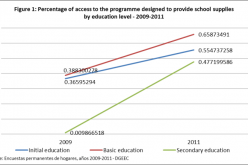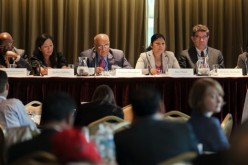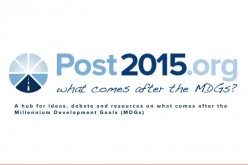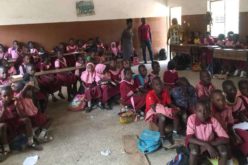Data for Development: Rhetoric and Reality
Originally posted on the ECHELON on September 21, 2016
THE GOVERNMENT OF SRI LANKA HAS ENDORSED THE UN’S SUSTAINABLE DEVELOPMENT GOALS, BUT DO WE HAVE ENOUGH DATA TO MEASURE HOW WE ARE DOING?
This article by Nalaka Gunawardene mainly discusses data situation in Sri Lanka based on comments and inputs from the recent interactive discussion “Measuring the Sustainable Development Goals (SDGs)” organised by the Centre for Poverty Analysis (CEPA) and the Southern Voice on Post-MDG International Development Goals on August 03, 2016 in Colombo.
“Data are the lifeblood of decision-making and the raw material for accountability. Without high-quality data providing the right information on the right things at the right time, designing, monitoring and evaluating effective policies becomes almost impossible.”
These were the opening words of a global report titled ‘A World That Counts’, released in November 2014 by the United Nations. It was prepared by an independent expert group on Data Revolution for Sustainable Development appointed by the UN Secretary General. The report noted how new technologies – from earth-watching satellites to mobile phone networks – have vastly increased volumes, the level of detail and speed of data available on societies, economies and the environment. Governments, companies, researchers and citizens are all adapting to this new world of abundant data – experts called it a ‘data revolution’.
Despite this, it acknowledged that huge data and knowledge gaps remain, and many people and groups still go uncounted. “These gaps limit governments’ ability to act and communicate honestly with the public. Months into the Ebola outbreak, for example, it is still hard to know how many people have died, or where.”
Thus, too many people, organisations and governments are not yet part of the data revolution because of the lack of resources, knowledge, capacity or opportunity. “There are huge and growing inequalities in access to data and information, and in the ability to use it.”
The need for better data has come into sharper focus with the UN’s member states adopting 17 Sustainable Development Goals (SDGs) as the framework for the next 15 years. They include ending poverty and hunger in all forms, ensuring quality education for all, enabling everyone to lead healthy lives, and achieving gender equality. These and other ambitious goals come with 169 targets and over 200 indicators – statistical measures with which to monitor progress. Governments now have to count
better.
Are we ready?
The government of Sri Lanka has endorsed SDGs, but do we have enough data to measure how we are doing? And do our planners and policymakers make good use of existing data collected by state and academic institutions? Not really.
“Sri Lanka has a great deal of data, but we need to better use this data for evidence-based decision making,” says Dr A J Satharasinghe, Director General of the Department of Census and Statistics (DCS).
Speaking at a recent Colombo event on data for development organised by the Centre for Poverty Analysis (CEPA), he revealed that the DCS is reviewing how best to monitor SDGs in Sri Lanka. The report – due shortly – will show what indicators can be supported with existing data and what new topics need coverage.
The discussion, moderated by Dr Indrajit Coomaraswamy, Governor of the Central Bank of Sri Lanka, identified several problems with development-related data. These range from the total absence of data on some factors to the lack of timely data or comparable data. Some analogue era data has not yet been converted into digital. Insular institutions unwilling to share their data further complicates matters. One piece of good news: From 2017, the DCS will be using tablets to digitally collect all field data. Dr Satharasinghe says this will bypass the time and effort in data entry, enabling faster analysis and release. The next census (due in 2021) will be our first digital one.
But technology cannot fix all problems; cross-sectoral thinking and coordination are also needed. Wimal Nanayakkara, a former head of the DCS and now a senior visiting fellow at the Institute of Policy Studies (IPS), says the department’s data collection work is not sufficient to track all SDGs.
For example, the DCS does not collect environment-related statistics, but a multitude of other state agencies do. Currently, however, no one puts them together to see the bigger picture. Another big challenge is in disaggregating the currently available data to identify disparities between provinces and districts (so that national averages don’t eclipse underperformance and deprivation in certain areas of the country – such as the estate sector) .
Nanayakkara says the DCS can provide breakdowns only to the district level. To go to lower levels of administration, the only data source is the census of population and housing (conducted once every 10 years).
“The Household Income and Expenditure Survey (HIES), Labour Force Survey, and Demographic and Health Survey (DHS) should all be conducted covering the lowest units possible. This can help policymakers ensure that ‘no one is left behind’ as SDGs aspire,” Nanayakkara recommends.
Share if you care!
Data sharing is also not a common practice in Sri Lanka. Data collecting and analysing entities (in public and university sectors) often work in isolation and sometimes duplicate efforts – or use different digital standards that make sharing difficult.
“We have lots of unused data at national level and even at institutional level,” says Dr Siri Hettige, Senior Professor and Chair of Sociology at the University of Colombo. “For example, the health sector generates loads of data, but some of it is not used for decision support. Institutions like the Child Protection Authority and the Police Department also amass plenty of data in the course of their work. But there is no systematic attempt to study this data to discern patterns or derive policy implications.”
Some researchers do access this data for their own studies, the results of which are published in academic journals or presented at specialist conferences. But there is no mechanism that takes such analyses to planners or policymakers (excepting occasional media reports).
At a time when mega development projects are being undertaken, these gaps can lead to costly mistakes. For example, due to a definitional error dating back to 1987, Sri Lanka’s urban population is highly underestimated (determined as 18% in the 2012 census, when it is, in fact, estimated by the World Bank to be at least 40%). Not having the right data in the right place also leads to wasting scarce public funds. As Dr Hettige says, “We boast of having brought down poverty. Yet, we keep giving income support (Samurdhi) to a larger number of individuals than those living below the poverty line. Do we know exactly who are in need of such support? We must generate more data – as well as become better users of available data.”
Data sharing in the digital age requires data format compatibility. Each country needs to adopt data gathering and storage standards to minimise problems that arise with the use of different devices, systems or measuring methods.
In this endeavour, Nanayakkara says the DCS should have overall responsibility as the national statistics office. But the DCS needs to work very closely with the National Planning Department (NPD). Sri Lanka also needs to integrate SDGs into national planning frameworks.
What price data?
Finally, the cost of data needs a common policy across the public sector. Some state agencies are willing to share their data – but only at a price (despite the public having already paid for their collection and storage).
For example, historical weather data going back many decades is available from the Department of Meteorology. But their fees place it beyond the reach of many researchers.Dr Ananda Mallawatantri, a scientist who now heads the International Union for Conservation of Nature (IUCN) in Sri Lanka, notes that one impediment to free data sharing is a Treasury directive that directs government agencies to sell data for income generation.
“However, the overall benefits of free data sharing would be far higher to the government and society than any income earned through selling,” he argues. He suggests that a cost-benefit analysis should be done of various data custodians selling their data, as opposed to the Consolidated Fund providing more funds to them.
Development is not a numbers game alone. But numbers do matter when progress needs monitoring and measuring. Data – both quantitative and qualitative – should become the basis of informed policy making and resource management. The Data Revolution is upon us, whether we are ready or not.
Nalaka Gunawardene is a science writer, journalist and development communication specialist with over 25 years of professional experience in Sri Lanka and across Asia. He has made a career out of asking questions, connecting dots and helping audiences make sense of complex technical and policy issues.
1,808 total views, 2 views today








